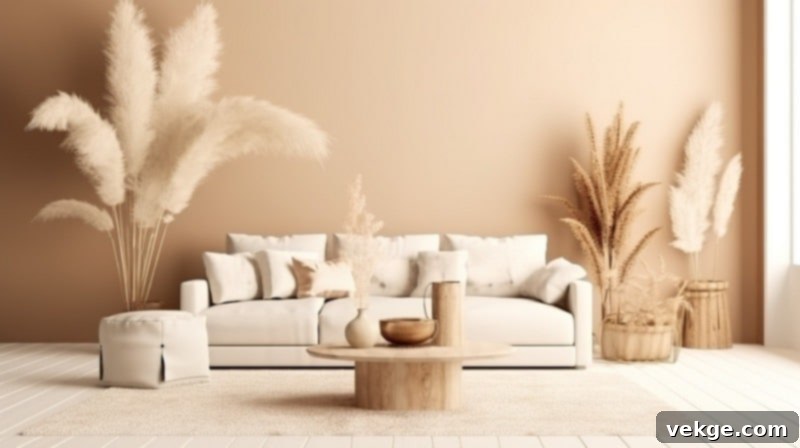Is Bohemian Style Still Trending in 2024? Unpacking the Evolution of Boho Decor
The bohemian style, often celebrated for its free-spirited, eclectic charm, has long been one of the most beloved decor ideas for homes worldwide. It imbues rooms with an artistic, lived-in aesthetic and a profoundly comfortable, inviting atmosphere. For many, a well-executed boho interior effortlessly creates a positive and lasting impression on guests, making them feel instantly at ease in a space rich with personality and unique stories.
However, truly embodying the bohemian spirit in your home goes far beyond simply placing a boho dining table in your eating area or a bohemian accent chair in your living room. It demands a holistic approach, encompassing carefully curated interior setups, thoughtful floor designs, intriguing wall patterns, and a myriad of other foundational elements. Only after these core components are established can you introduce the additional, often signature, items that complete the bohemian narrative. These might include an abundance of lush indoor plants, vibrant floral arrangements, atmospheric LED string lights, ornate chandeliers, strategically placed mirrors, and captivating artwork.
Yet, as we navigate the ever-evolving landscape of interior design, a crucial question emerges: “Is the bohemian style still a worthwhile investment for today’s homeowners?” This article delves into whether bohemian decor retains its trending status in 2024. We’ll explore how embracing a bohemian aesthetic not only impacts your initial budget but also influences the long-term maintenance required to preserve its unique allure.
Understanding the Essence of Bohemian Style
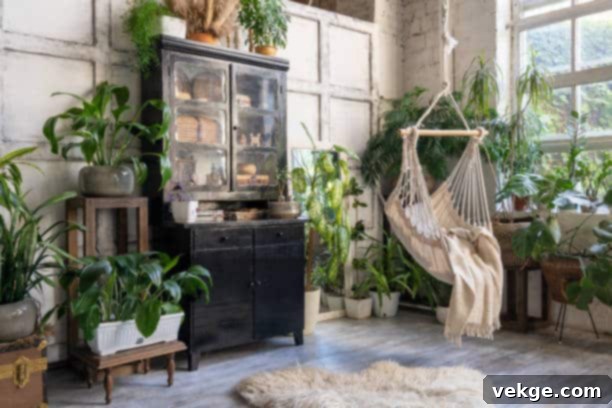
At its heart, bohemian style – often simply referred to as “boho decor” – represents a vibrant fusion of diverse cultures, artistic expressions, and unconventional living. Rooted in the nomadic lifestyles of artists, writers, and free spirits of the 19th century, a bohemian home is characterized by its intentional layering of unique colors, intricate patterns, and rich textures. It’s a style that champions individuality and tells a story, often drawing inspiration from global travel and a deep appreciation for handcrafted items.
To infuse your home with this distinctive bohemian spirit, several key considerations come into play. It begins with foundational elements such as distinctive wall designs – perhaps featuring patterned wallpapers, tapestries, or textured paint – and extends to thoughtful flooring plans that might incorporate natural wood, woven rugs, or intricate tile work. The overall interior layout is equally crucial, often featuring open, inviting spaces that encourage relaxation and connection. Once these primary elements are in place, the true magic unfolds with the addition of characteristic features like warm, ambient lighting, an abundance of verdant plants, reflective mirrors, and carefully selected textiles.
This multifaceted approach to decoration offers more than just visual appeal; it promises a comfortable and aesthetically rich living environment. The blend of various elements, from rich textures and bold interior choices to fascinating additional accents, defines the enduring charm of a bohemian aesthetic. It’s a look that feels collected over time, rather than perfectly matched, creating a sense of history and warmth.
Is Bohemian Decor Still Trending in 2024?
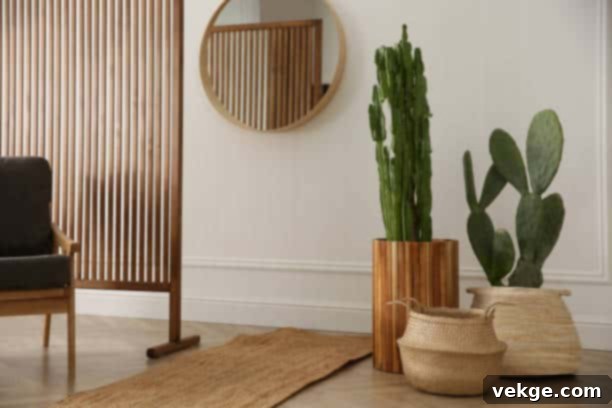
Let’s address the elephant in the room: Is bohemian decor still a prevalent trend in 2024? While its unique charm continues to resonate with many, the answer, in terms of widespread, dominant popularity, is nuanced but generally leans towards “No.” While elements of boho style persist and evolve, the full-blown, traditional bohemian aesthetic is no longer at the forefront of mainstream interior design trends.
There are numerous contributing factors to this shift. Furnishing a home with an authentic bohemian style often requires significant effort and a discerning eye, making it a less appealing option for many professional designers and homeowners seeking simpler solutions. Moreover, it can be a surprisingly expensive endeavor. The sourcing of unique, often handcrafted, elements, coupled with the need for layered textures and distinct patterns, frequently pushes budgets beyond the reach of those with more modest financial plans. Even when a minimal bohemian look is achieved, its upkeep can be demanding, proving challenging for those without ample time or resources for consistent maintenance.
The very essence of bohemian decor, with its rich mix of elements, can paradoxically lead to a cluttered appearance if not meticulously maintained. This complexity stands in stark contrast to the burgeoning popularity of minimalist designs in 2024, which prioritize simplicity, functionality, and ease of upkeep. As lifestyles become busier and people increasingly seek calm and order in their living spaces, the less-is-more philosophy of minimalism has naturally begun to replace the maximalist tendencies of traditional bohemian style.
Key Reasons Why Bohemian Style’s Dominance is Fading
1. The High Cost of Authentic Boho
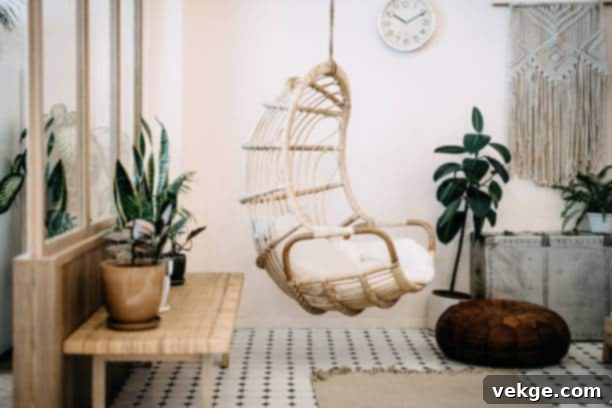
Embracing a full bohemian aesthetic in your home can quickly become an unexpectedly expensive undertaking, often exceeding initial budget expectations. Achieving the layered, eclectic look requires a multitude of elements, each contributing to the overall cost. For instance, creating the perfect bold accent walls or unique patterns often involves specialized treatments or artisan wallpapers. This is then compounded by the selection of distinct interior finishes and flooring materials, which are crucial for setting the boho foundation.
Beyond these structural elements, the furniture itself adds significantly to the expense. Sourcing authentic boho-themed pieces, such as a hand-carved dining table, a vintage bohemian chair, or woven rattan pieces, can be costly. Furthermore, the signature natural materials like wicker, intricate ethnic prints, macrame, and organic fabrics – think linen, cotton, and jute – are often priced higher than their mass-produced counterparts. These items are valued for their craftsmanship, unique origins, and natural appeal, but their cumulative cost can be prohibitive for many. If you’re working with a tight budget, pursuing a comprehensive bohemian style might prove financially challenging and potentially not yield the desired return on investment in terms of sustained trendiness.
2. Demanding Maintenance Requirements
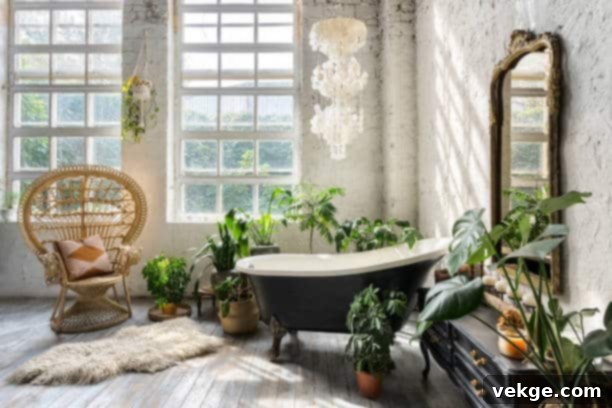
Even if you manage to navigate the initial financial hurdles of creating a bohemian-style home, perhaps by exceeding your budget or securing a loan, the long-term reality of maintenance presents its own set of challenges. Setting up a bohemian home is merely the first step; sustaining its charm and aesthetic appeal demands consistent and often meticulous upkeep. The diverse range of materials and textures characteristic of boho decor means that walls, floors, and intricate interior elements may require frequent, specialized cleaning and preservation.
This type of home, with its intentional mix of varied elements – from woven rugs and embroidered cushions to numerous plants and decorative objects – necessitates a preservation process that is far from simple. Without diligent maintenance, the vibrant look and unique glow of a bohemian space can quickly diminish. Consider the additional elements: numerous mirrors need regular cleaning, artwork requires careful dusting, and a multitude of indoor plants demand consistent watering, pruning, and care. While furnishing a bohemian-style home can initially appear fascinating and creatively fulfilling, the ongoing commitment to its maintenance can, for many, become a source of stress rather than relaxation.
3. The Risk of Clutter and Visual Disarray
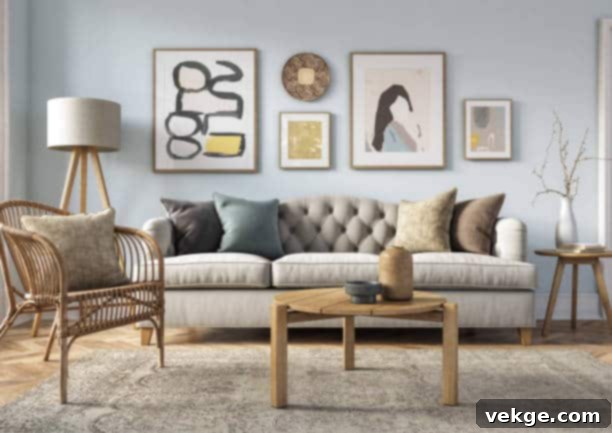
The success of a bohemian-style home heavily relies on the harmonious interplay of its numerous features, including intricate interior designs, thoughtful floor planning, and carefully chosen wall colors or patterns. Yet, these foundational elements are just the beginning; achieving that captivating final touch often requires adding a wealth of additional decorative features. This layering, while central to the boho aesthetic, can paradoxically become a source of visual clutter if not expertly managed.
According to design experts, the very richness of a bohemian home, if not properly maintained and curated, can easily transform beautiful interior designs and patterns into a cluttered mess. This can arise from a lack of regular tidying, where decorative baskets, bins, and an array of objects accumulate without purpose. The arrangement of numerous plants, while adding life, can also create disruptions if they are haphazardly placed or grow untamed. Similarly, an abundance of multiple artworks, various mirrors, or other decorative elements, when not thoughtfully integrated, can inadvertently overpower and hide the true beauty and intended shade of the wall’s color, leading to a sense of overwhelm. While implementing a bohemian style can create a luxurious and expressive environment, without precise arrangements and diligent curation, your decoration can quickly descend into disarray rather than an artistic haven.
4. The Growing Appeal of Minimalism
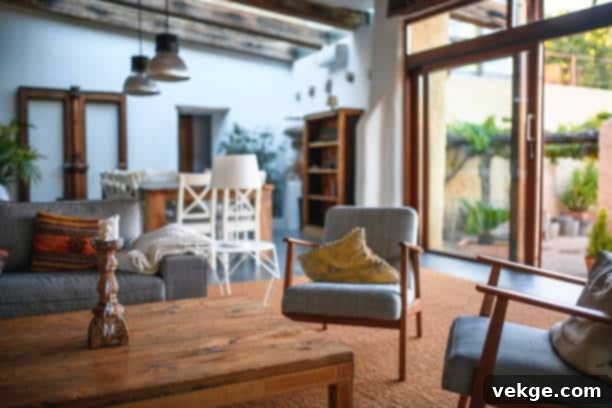
Just a few years ago, bohemian decor was undeniably a leading trend, captivating homeowners with its promise of a luxurious, unique vibe and the ability to establish a memorable impression on visitors. Its appeal lay in its ability to tell a story and feel authentically lived-in. However, in the current design climate, boho is gradually losing its dominant status, largely due to the collective shift in people’s preferences towards simpler, more streamlined aesthetics.
This transition is not just about cost or maintenance; it reflects a broader societal desire for less complexity. People are increasingly opting for minimal design themes because they offer a more pocket-friendly solution and, crucially, demand significantly less commitment in terms of upkeep. In a minimalist approach, the emphasis shifts away from an abundance of additional decorative elements. Instead, focus is placed on the core components: well-designed interiors, clean wall finishes, and functional floor patterns. There’s no need to engage in the constant “conservation activity” that often accompanies a bohemian space. This movement towards a pared-down aesthetic aligns with a desire for mental clarity, less consumerism, and living in spaces that feel calm, uncluttered, and effortlessly sophisticated.
5. The Rise of Competing Design Trends
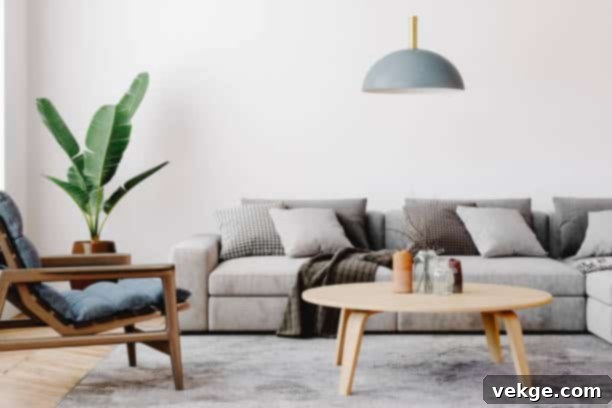
While the bohemian style certainly offers a fascinating and visually rich choice for decorating a home, its practical implementation is often far from straightforward, demanding considerable effort and a series of potentially hectic activities. Meanwhile, the current market is being captured by a diverse array of other appealing styles that are gaining significant traction among homeowners. People are increasingly drawn to these alternative approaches primarily because they tend to be more cost-effective and require substantially lower maintenance, aligning perfectly with modern lifestyles.
These burgeoning styles include the sophisticated simplicity of eclectic homes, which, unlike boho, curate a mix of elements with a more refined and intentional hand; timeless traditional homes that offer enduring elegance; and the ever-popular Scandinavian-style homes, known for their emphasis on functionality, natural light, and hygge-inspired comfort. Beyond these, specific regional styles are also experiencing a resurgence: French country style, with its rustic charm and elegant antiquity; English country style, favoring comfort, patterns, and classic furnishings; the warm and inviting Spanish style, characterized by earthy tones and natural materials; and ranch-style houses, which celebrate open spaces and a connection to nature. These alternative styles often do not necessitate an excessive collection of decorative elements, making them more accessible, manageable, and consequently, highly trendy in today’s design landscape.
Summing It Up: The Evolving Landscape of Home Decor
The bohemian style, with its innovative approach to interior design, has undeniably offered a vibrant and aesthetically rich way to furnish a home. Its ability to convey an artistic, free-spirited vibe has resonated with many over the years. However, the comprehensive implementation of a true bohemian aesthetic often comes with significant financial implications, potentially exceeding a comfortable budget. Moreover, maintaining its intricate, layered look necessitates a strict and consistent preservation process, without which a bohemian space can quickly lose its charm and appear cluttered.
These practical considerations are key reasons why the bohemian style, as a dominant trend, is currently experiencing a decline. In its place, homeowners are increasingly gravitating towards more minimal and practical design themes. This shift is evident in the growing popularity of styles such as Spanish-inspired aesthetics, Scandinavian-style simplicity, the enduring elegance of English country, and the rustic charm of French-style homes. These alternatives are favored because they typically require fewer additional decorative items, making them more budget-friendly and significantly easier to maintain. As people prioritize both financial prudence and a more relaxed approach to home upkeep, the appeal of a less demanding, yet still beautiful, living environment continues to grow, shaping the interior design trends of today and tomorrow.
